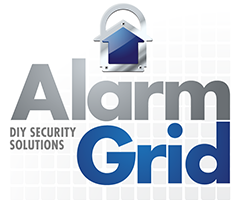Wireless Smoke Detectors




Wireless smoke detectors are devices you will definitely want to purchase if you are looking to get the very most out of your alarm system. Remember, an alarm system is designed to do more than just security functions. Life-safety sensors are also extremely important for keeping you and all other building occupants safe and protected. And wireless smoke detectors represent some of the most popular life-safety devices available. Anyone with a wireless alarm panel will want to add these sensors so that they can do as much as possible with their system.
A great aspect of wireless smoke detectors is that they are extremely easy to use. Most wireless alarm systems have built-in wireless receivers for readily supporting wireless smoke detectors. These devices are easy to enroll, and setup with a system. We recommend auto-enrolling your wireless smoke detectors for ensuring that they can properly communicate with your security system. This is better than trying to manually enter the Serial Number, as there is a possibility you might make a mistake. By auto-enrolling, you will know that your wireless smoke sensor is communicating properly.
When selecting wireless smoke detectors, it is very important that you make sure that they are compatible with your new security system. Each wireless smoke detector will communicate at a particular frequency. You need to make sure that the frequency your wireless smoke detector communicates at is compatible with your security system. This is determined by the wireless receiver used with your system. Remember, most wireless alarm systems already come with a built-in wireless receiver. For wired panels, a separate wireless receiver must be added.
Some of the newer wireless smoke detectors offer smoke more advanced features. This can include the one-go-all-go feature. This feature was traditionally only available for high-voltage hardwired smoke detectors. However, alarm manufacturers saw the benefit of one-go-all-go, and they decided to add the feature to their wireless smoke detectors as well. One-go-all-go means that when one smoke detector is activated, all the other smoke detectors on the same network will activate as well. This is great for alerting building occupants.
For wireless smoke detectors, one-go-all-go will only work with smoke detectors on the same frequency that are paired with the same panel. Additionally, only certain wireless smoke detectors support this feature. Some examples of compatible smoke detectors include the SiX Series Smoke Detectors and the PowerG Smoke Detectors. For some panels, there may not be a wireless one-go-all-go option available. You may need to upgrade to a newer system to do one-go-all-go.
Additionally, many wireless smoke detectors offer more than just smoke detection. Using a multi-purpose sensor can be great for getting the most out of your system. For example, there are smoke and heat detectors that can sense a fire through smoke or unusually high temperatures. Some smoke detectors also offer low-temperature detection, also known as freeze detection. This is great for detecting a broken HVAC system that could cause the pipes to freeze. Finally, there are some combination sensors that also offer carbon monoxide detection, which can be life-saving.





